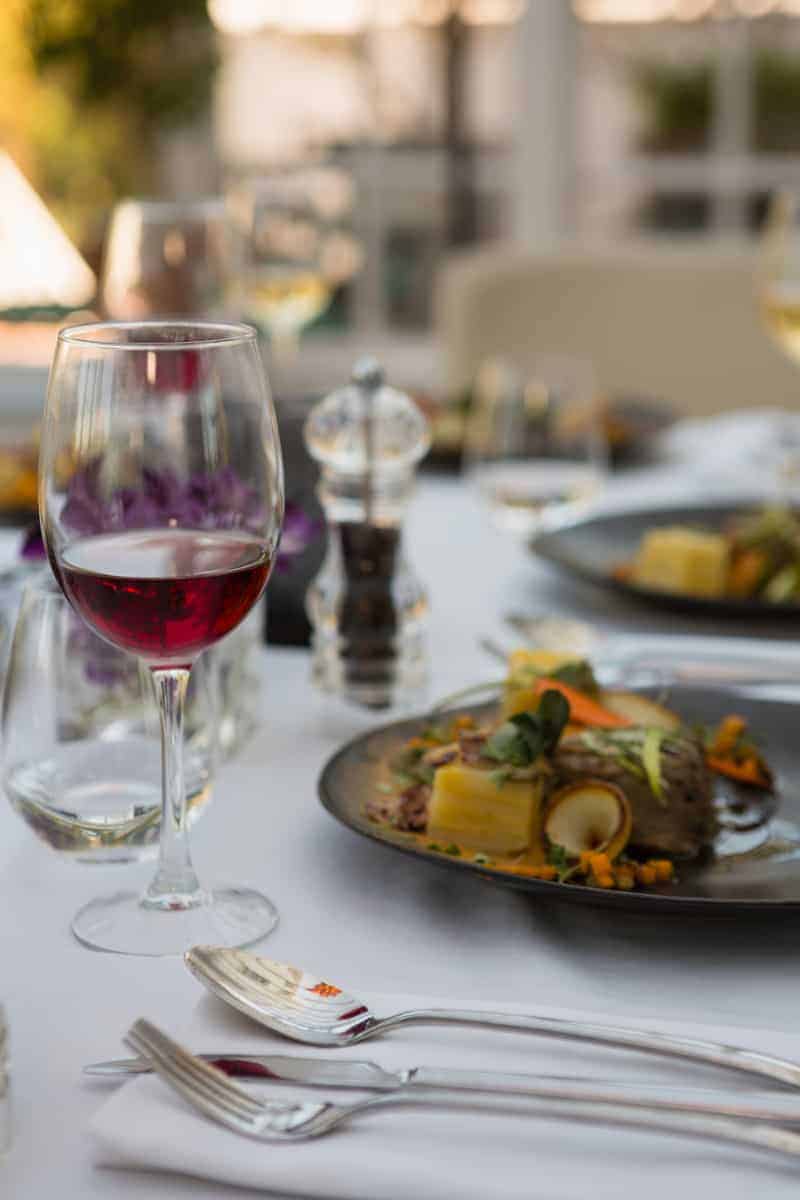If you consider yourself a gourmand, you’ll probably want to learn about which alcohol goes with which kinds of food. Pairing food and alcohol is somewhat of an art form, which is why the sommelier profession exists.
It’s kind of remarkable to think that it could be someone’s job to know which wine pairs with which food. Rather than learning about these things as a hobby, a restaurant pays such an individual to hang around and offer opinions about what wine a table of customers might try based on what they ordered. It seems deliciously decadent to either be a sommelier or use one.
In any event, if there’s no expert nearby, it’s nice to know what wines are likely to go well with which meals. We’ll give you a few tips in this area right now.

Fish
We should first mention that if you ingest any more than a glass of wine or more than any other single alcoholic drink at one sitting, you should never drive home afterward. If you do, you could find yourself needing to contact a DUI lawyer, and nobody wants that to happen.
If you order fish, then more times than not, you’re going to want to go with a glass of white wine. White wines are normally lighter, and most people regard fish as a lighter main dish as well. You find seafood at the center of lots of Cajun cooking, and Italian and Mediterranean dishes often feature it as well.
You might go with a nice Pinot Grigio, Sauvignon Blanc, or you might opt for a Chenin Blanc. Each one is austere, crisp, and rather dry.
If you have a lean, white, simply-prepared fish, any of these will compliment it nicely. You should be fine ordering white wine with halibut, flounder, snapper, walleye, oysters, or clams.
Beef
If you’re getting a more robust dinner, like beef Wellington, a strip or tenderloin steak, beef stew, or Shepard’s pie, a glass of red wine will compliment any of those. Most sommeliers will steer you toward a full-bodied Cabernet. They often call these the “people-pleasers” since even someone who doesn’t know much about wine will appreciate the rather broad flavor they provide.
You can also go with Zinfandel, though that’s more of an acquired taste. It’s not as acidic as a Cabernet, and they’re generally sweeter. Acidic wines like Cabernets are heavy in compound flavors like tannins, while Zinfandels are not.
You could also do a Malbec, which is darker and has an almost inky color. They have fruitier profiles and less of an oaky or woody aroma.
Pork
If you get pork at a restaurant, like a brace of bone-in chops or tenderloin, you might go with a lighter red that’s not quite as full-bodied. Pork dishes tend to be sweeter, so something like a Shiraz or Cabernet is probably not going to pair so well with it.
Instead, go with a Chianti or a Tempranillo. You will often find that Spanish wines pair well with pork since Spanish cooking often features it heavily. In the Sevilla section of Spain, you can buy inexpensive red wines that go well with pork belly and other common, simply-prepared dishes.
A German Riesling might work as well, or you might even try a cocktail if you want to get away from the wine options altogether. A whiskey-based drink like an Old-Fashioned should go fine with pork belly, sausage, or pulled pork shoulder.
What About Dessert?
If you need to know what wines go best with dessert, you should know that several options exist of which a sommelier would approve. You can get a Rose or something semi-sweet, or maybe you want to move over into champagne by this point in the evening.
All champagne is French, as wine experts named it after the region. There are also sparkling white wines that are not technically champagnes. They go well with tarts or petit fours.
If you are having a heavier dessert, such as a Black Forest cake, you’ll probably want a sweet red with that. If you’re having a fruit pie, a German Riesling is almost always suitable.
Remember that although you can always get advice about what foods and alcohols pair well together, there’s nothing wrong with experimenting so as to find out your preferences. Just because you’re pairing food and alcohol in a way of which a sommelier would disapprove, that does not mean you and your guests can’t still enjoy yourselves.


